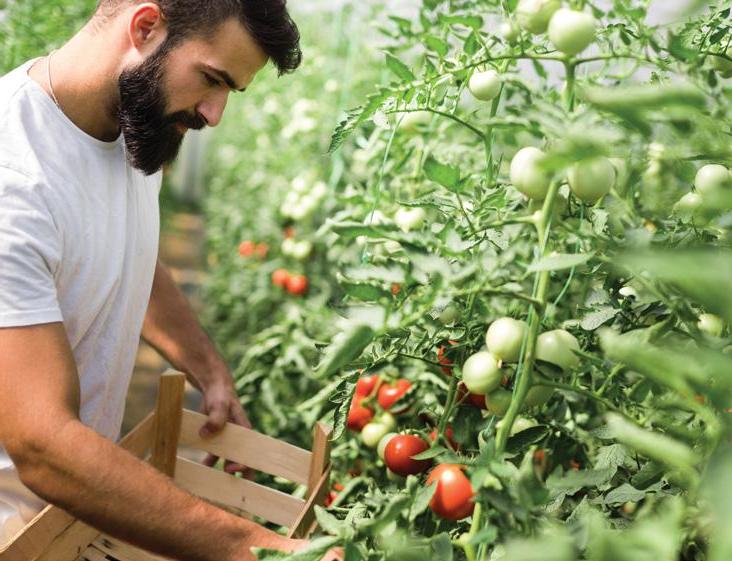
4 minute read
Will you miss out on labour?
OPINION PIECE BY MELISSA DENNING AND AMBER ATKINSON VEGETABLESWA
The seeds have been planted, the rain has fallen and the sun has shone and now the fruits of your labour are ready to be harvested.
The time has now come that you must depend on others: pickers, packers, backpackers, travellers, students, labourers and anyone else who can get your crop into the bins/crates/boxes/ bags/punnets to get them to market. But who will you get; how will you get them; and how long will they stay? These are all questions and issues that get raised every year, but add in a pandemic, travel restrictions, and an unknown number of available workers and you’ve got a unique set of circumstances that require careful consideration. Labour is always an issue. The time it takes to recruit, train and then get those employees up to competent speed are all costs to the business. Comments from growers over the last couple of months have indicated a varying range of concern over labour. Some growers are sorted. They have their workers already in Australia under the Seasonal Worker Programme (SWP) and will see through their season.
Other employers that would have had SWP workers arrive have been able to source from other farms that are finishing their crops. Some farms are not able to bring in their workers so will revert to Working Holiday Makers (WHMs) this year and wait to return to normal next year. Others have their fingers crossed that they will be able to find enough people to cover their needs. Employers that utilise the SWP are very familiar with having to submit plans and paperwork several months in advance in order to garner approval from the Department of Education, Skills and Employment (DESE). We know for a fact that Agriculture Minister, David Littleproud, will allow Seasonal Worker Programme and Pacific Labour Scheme workers to extend their stay for 12 months to work for approved employers. Meanwhile Working Holiday Makers (WHM) will be exempt from the six-month limit with one employer and be eligible for a further visa to continue helping farmers get on with the jobs. To get a clear picture of what is currently happening in the WA labour space, we spoke to the Department of Primary Industries and Regional Development (DPIRD), Agribusiness Development Manager Jackie Jarvis. She confirmed that while there was an influx of backpackers and WHM’s into some parts of regional WA following the closure of the hospitality sector in March, she has been provided with data from the Department of Home Affairs that shows 34% of WHM have left Australia since March.

DPIRD estimated there were less than 9,000 WHM left in WA at the end of May, when there would usually have close to 15,000. There are obviously no more coming for some time and we need you, our members, to consider the potential impact on accessing the suitable workforce into spring and summer. In April and May 2020 the labour demand of the WA agrifood sector was around 1,500 seasonal/casual workers. DPIRD data shows that by September this demand lifts to approximately 7,000 seasonal workers servicing the agrifood sector in WA on any given day. We also saw the northern hospitality sector commence recruiting WHM at the end of May, in preparation for an influx of domestic tourists. We expect other WA regions to also start recruiting WHM for their hospitality sectors ahead of the July school holidays, increasing in Spring. With the decline in the overall number of the WHM, and the peak agricultural labour requirements coinciding with an expected pick-up in domestic tourism, DPIRD is working to ensure growers have the required number of workers in each region. The Agribusiness Food & Trade team has funded an employment matching platform, Stadium, (https://studium. work/wa-regions) launched on April 14, 2020 to provide job matching services to WA agrifood employers, recruitment agencies and labour hire companies. This recruitment platform and personalised employment matching services allows employers to access registered job seekers, including temporary visa holders from across regional WA. A geo-targeted social media campaign was launched in late April 2020 resulting in over 2,000 job seeker registrations across WA; with this database growing daily.
3 DPIRD estimated there were less than 9,000 WHM left in WA at the end of May, when there would usually have close to 15,000.
Essentially we now have registered job seekers (WHM and locals) and we have a platform that enables employers to search through that platform for both skilled and/or experienced workers; as well as unskilled. DPIRD has funded this service for six months to enable all employers and industry groups to access the platform. The use of the platform by WA employers will also provide great data to support future workforce development projects in the agricultural sector; and we at vegetablesWA encourage all employers and industry groups access the database.
MORE INFORMATION
Contact Melissa Denning, Labour Scheme Facilitator, vegetablesWA on 0477 477 044.










